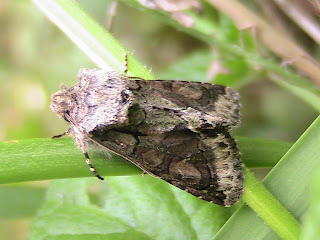
It was much milder lastnight (10.5C) after not seeing any moths last Friday during a cold 8C session. Rain threatened all evening with occasional rain drops falling.
A Light Brown Apple Moth was the first to visit and then a faded Red-green Carpet was also caught.







